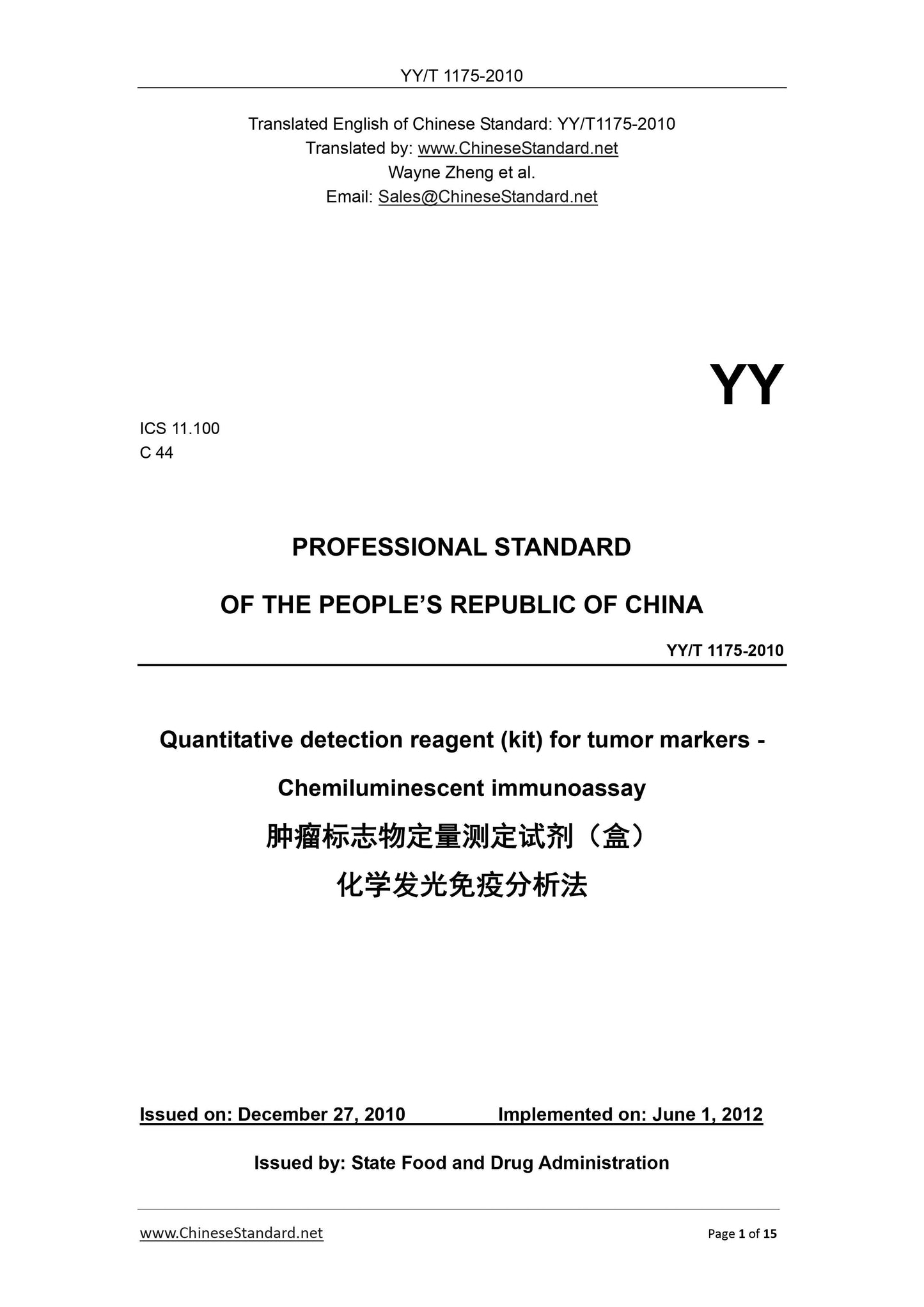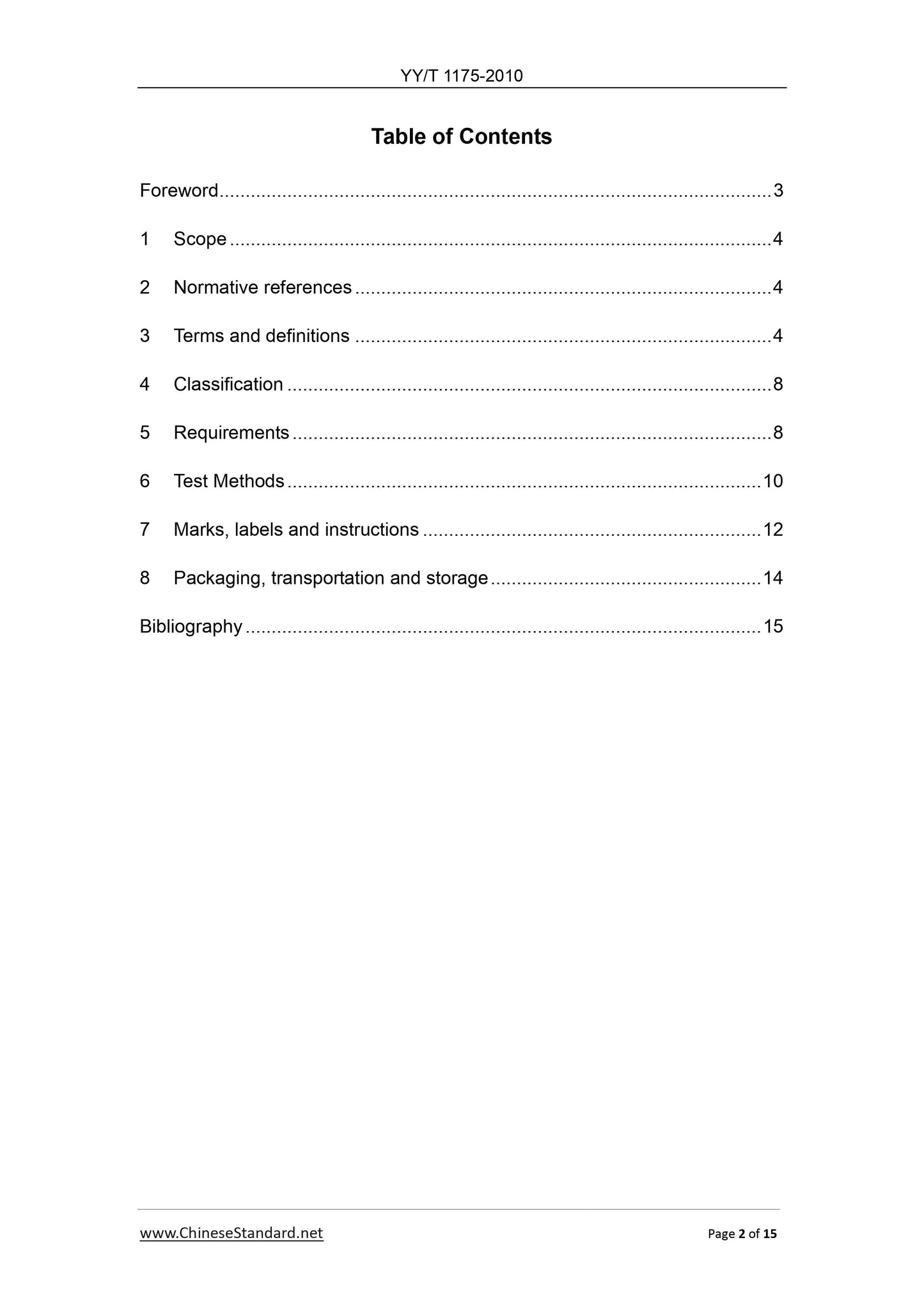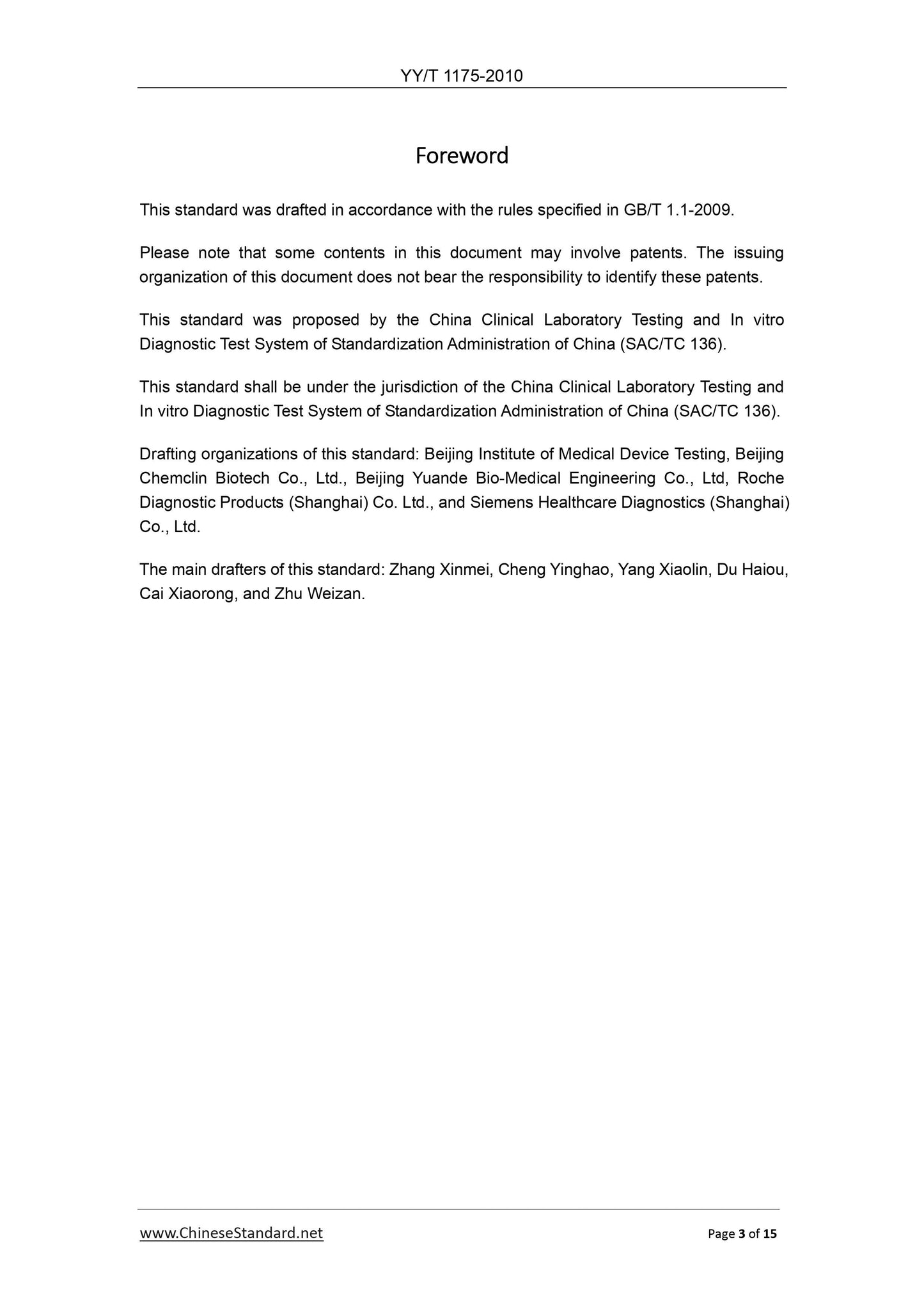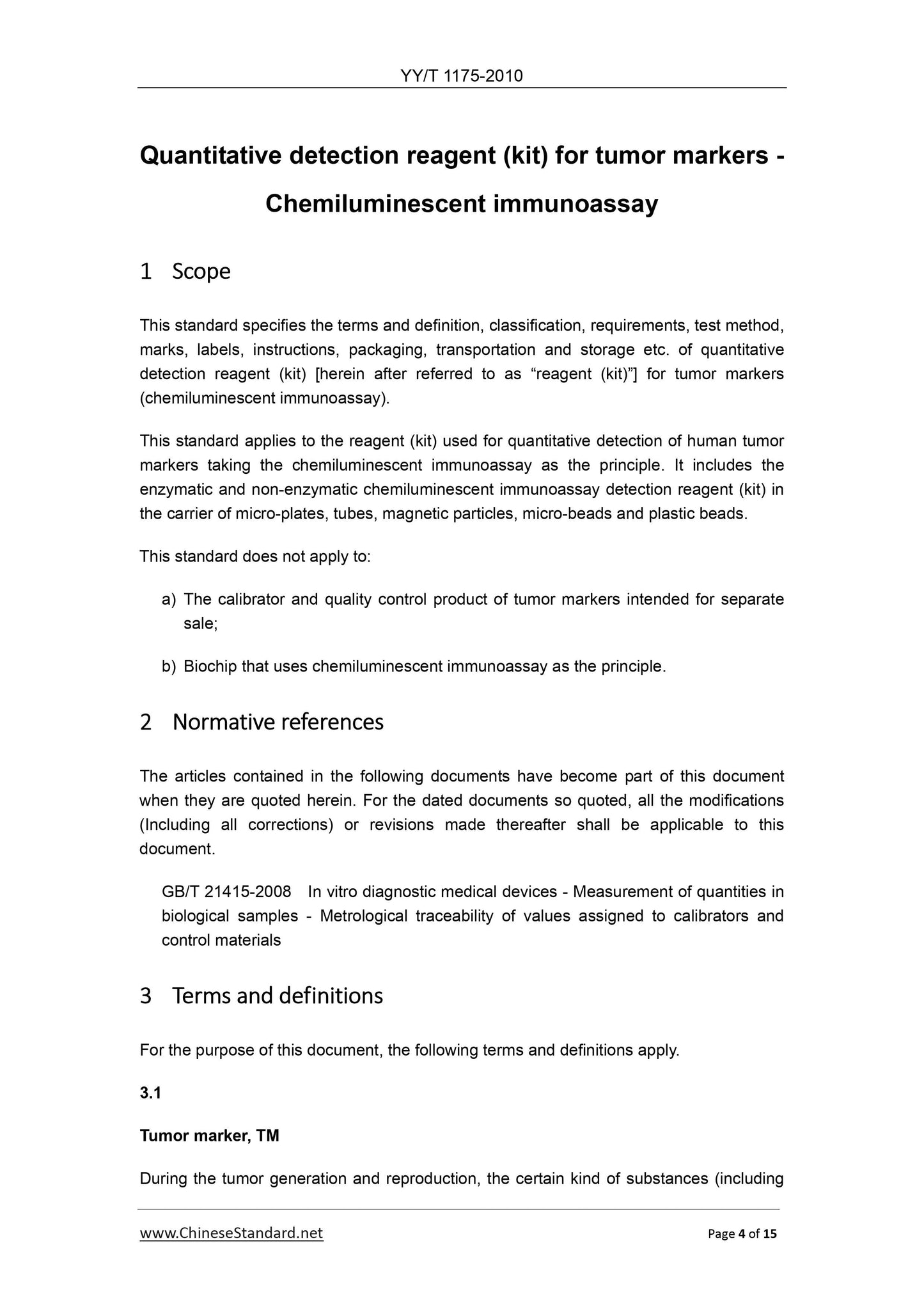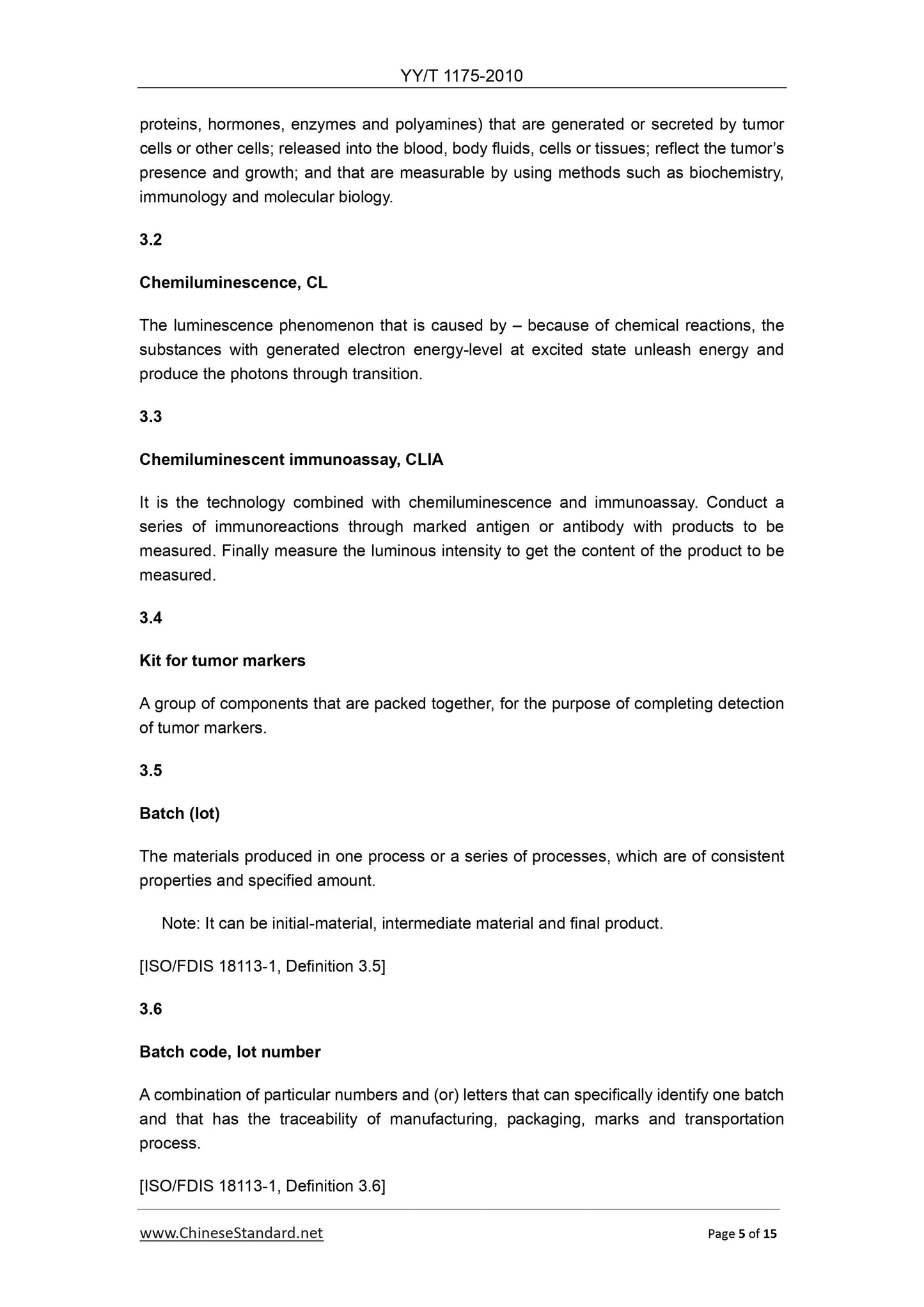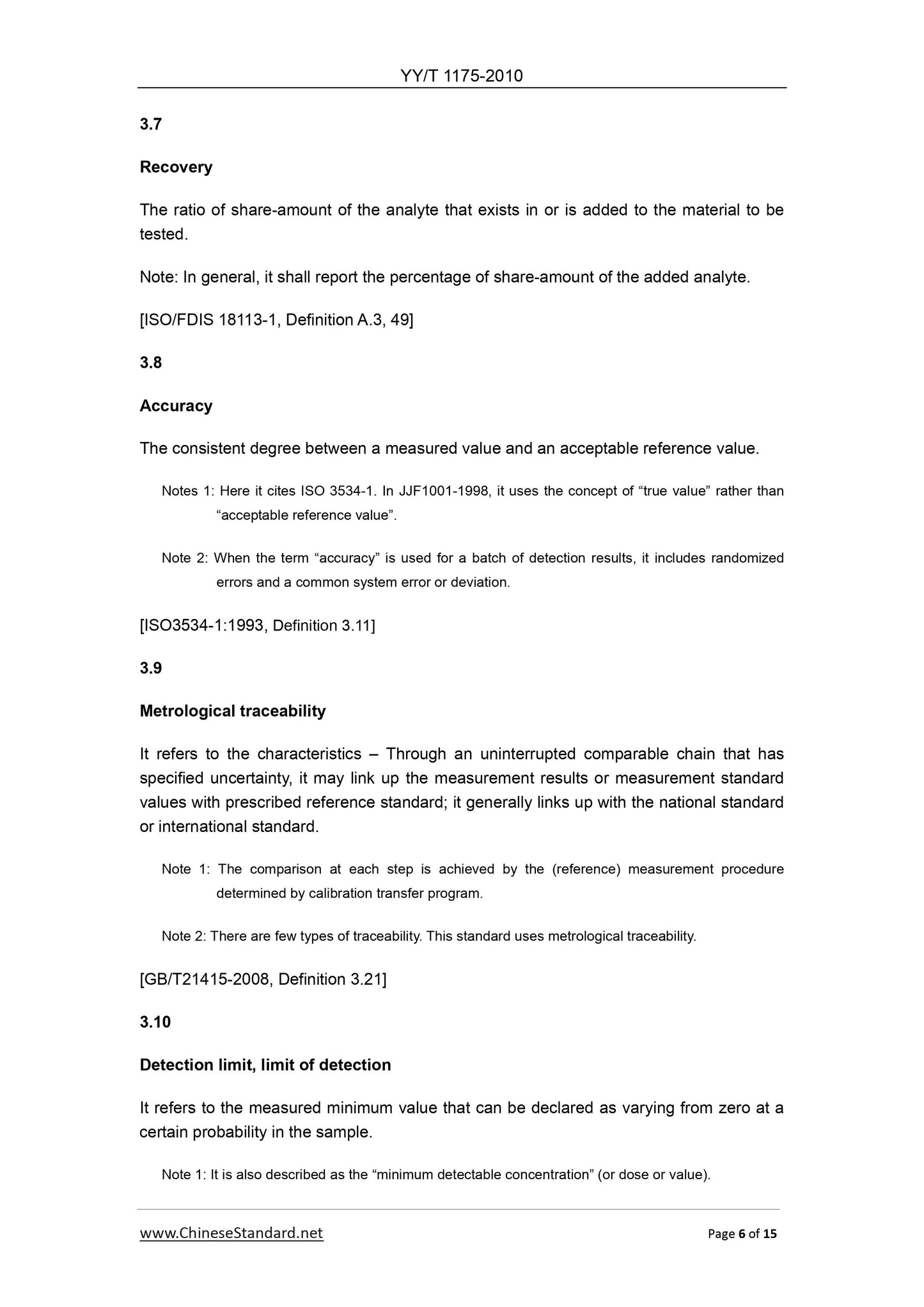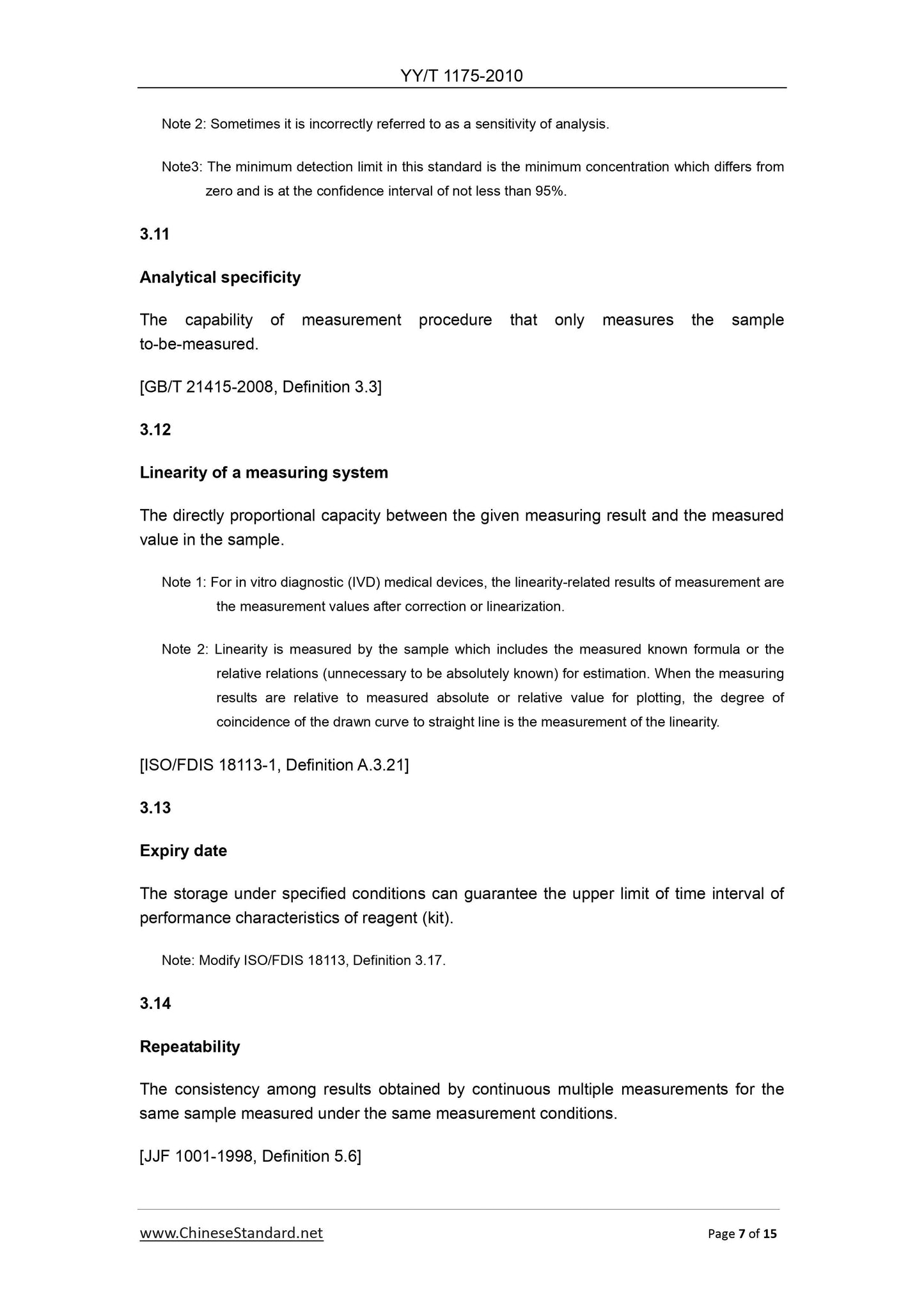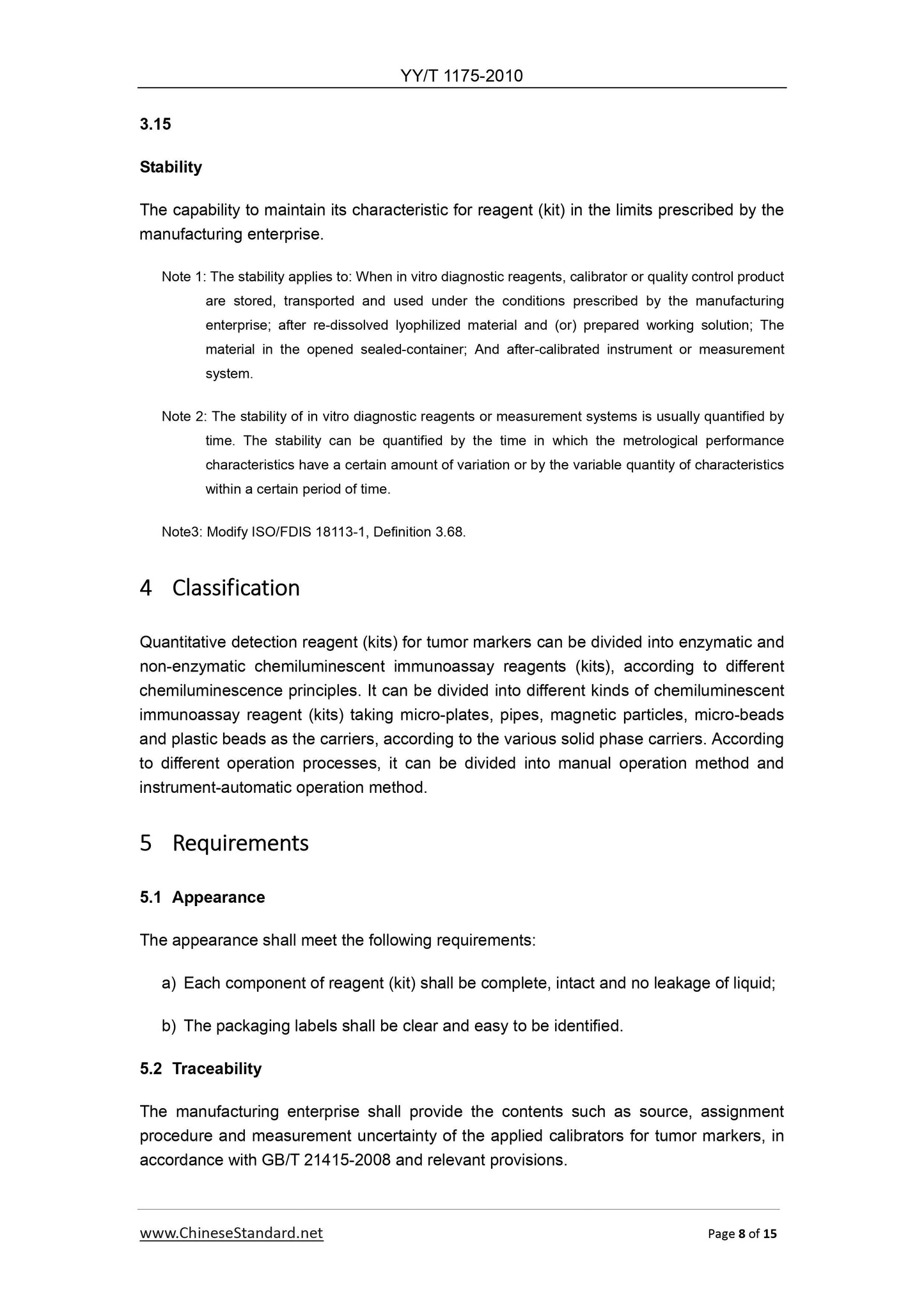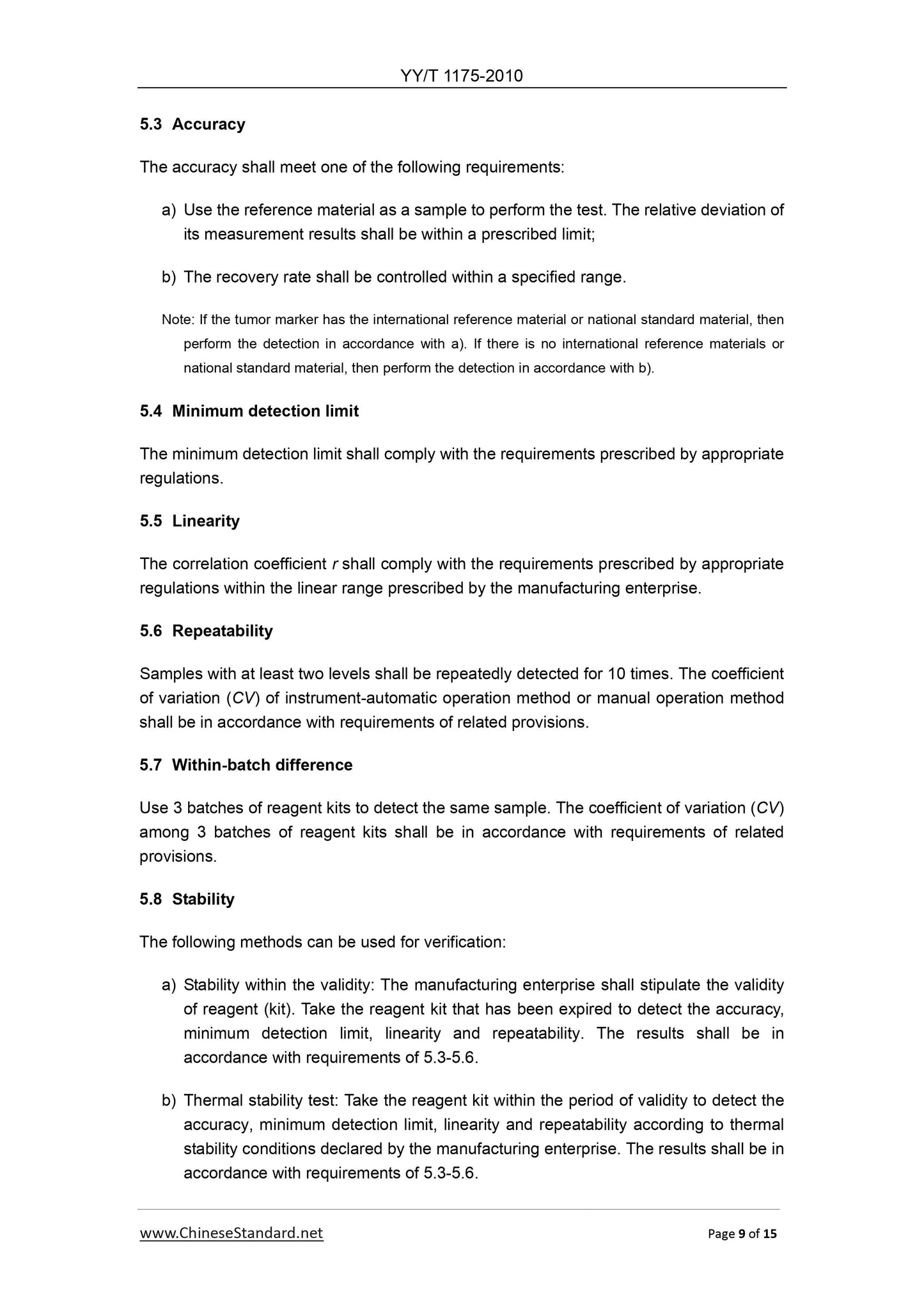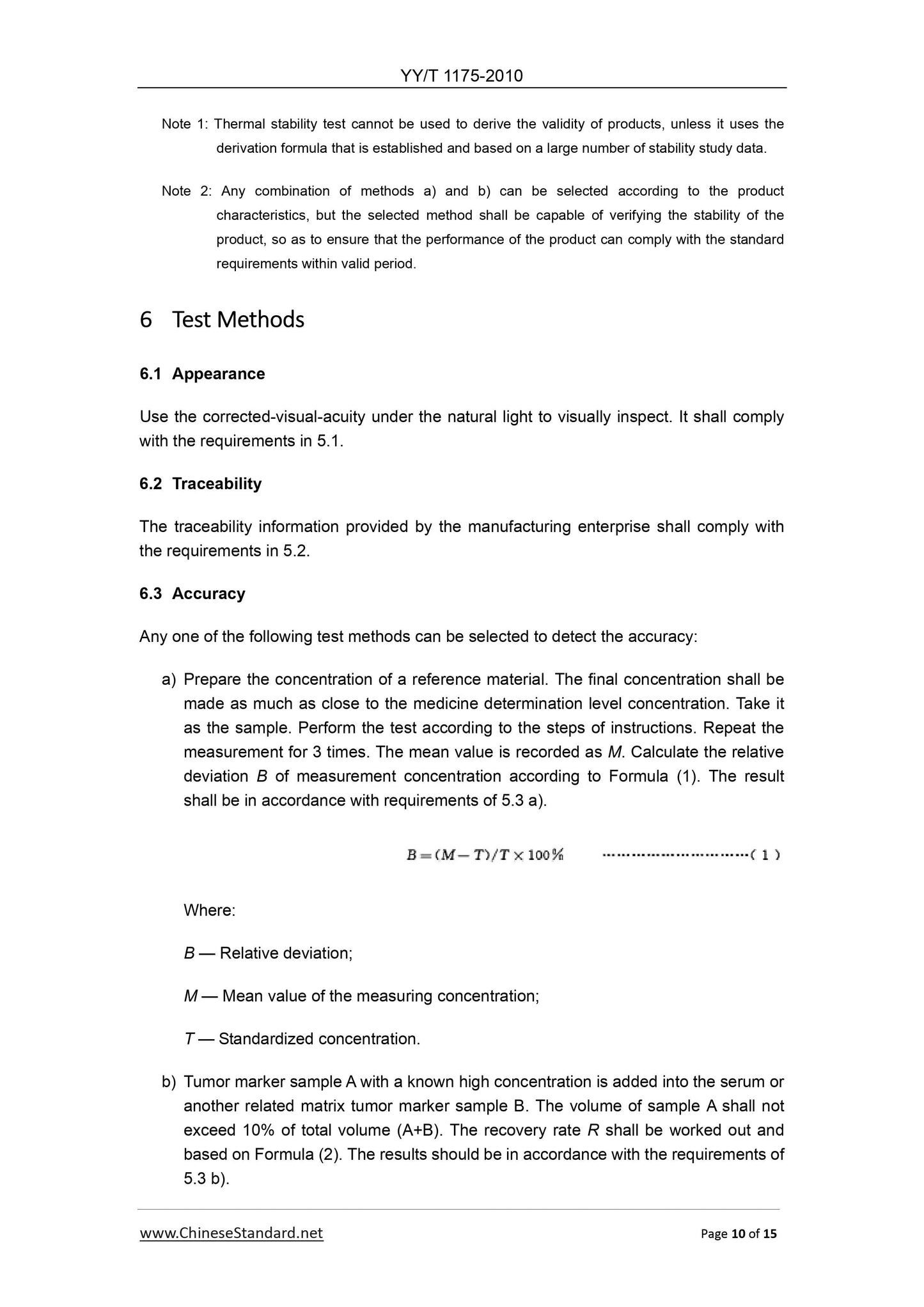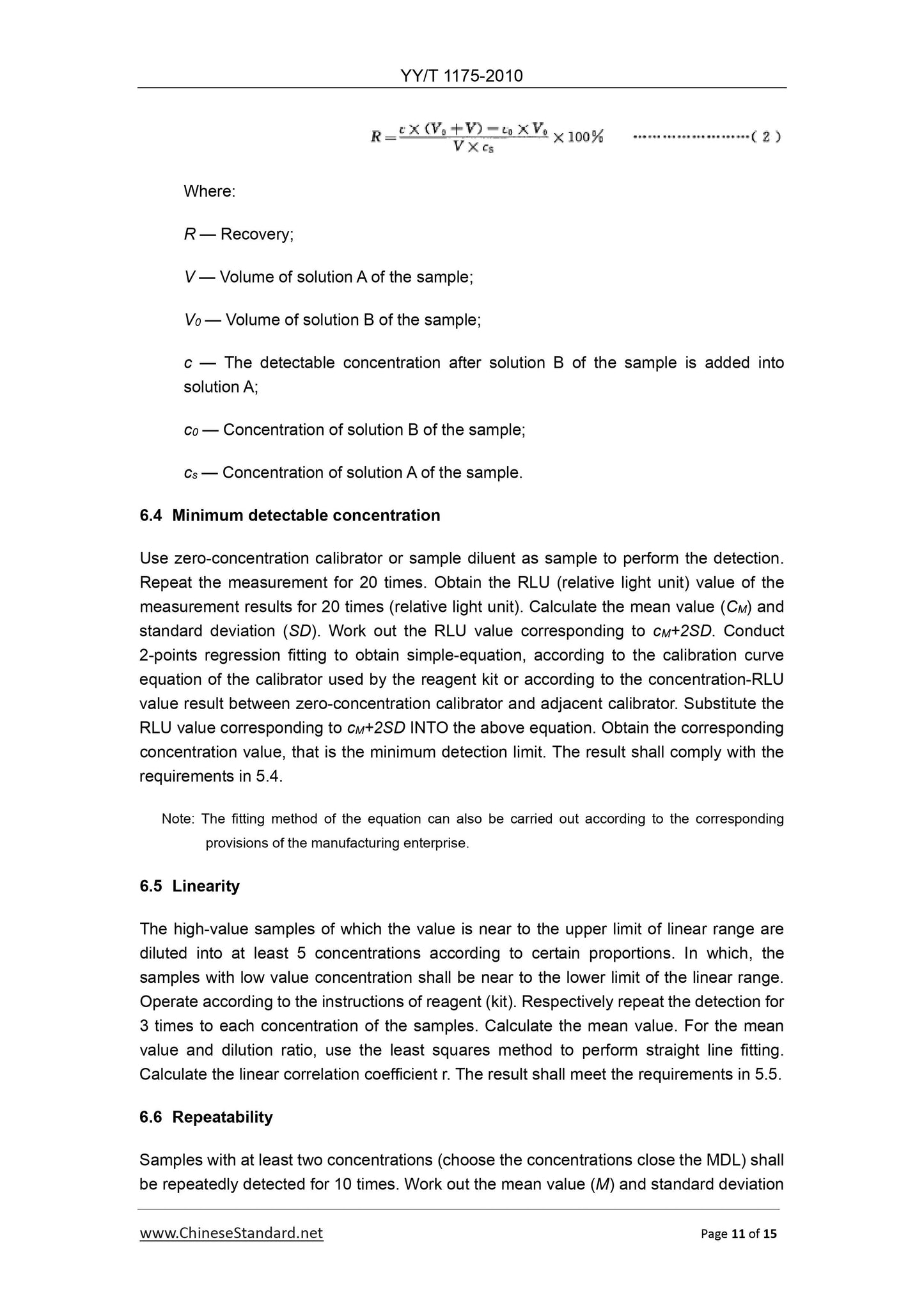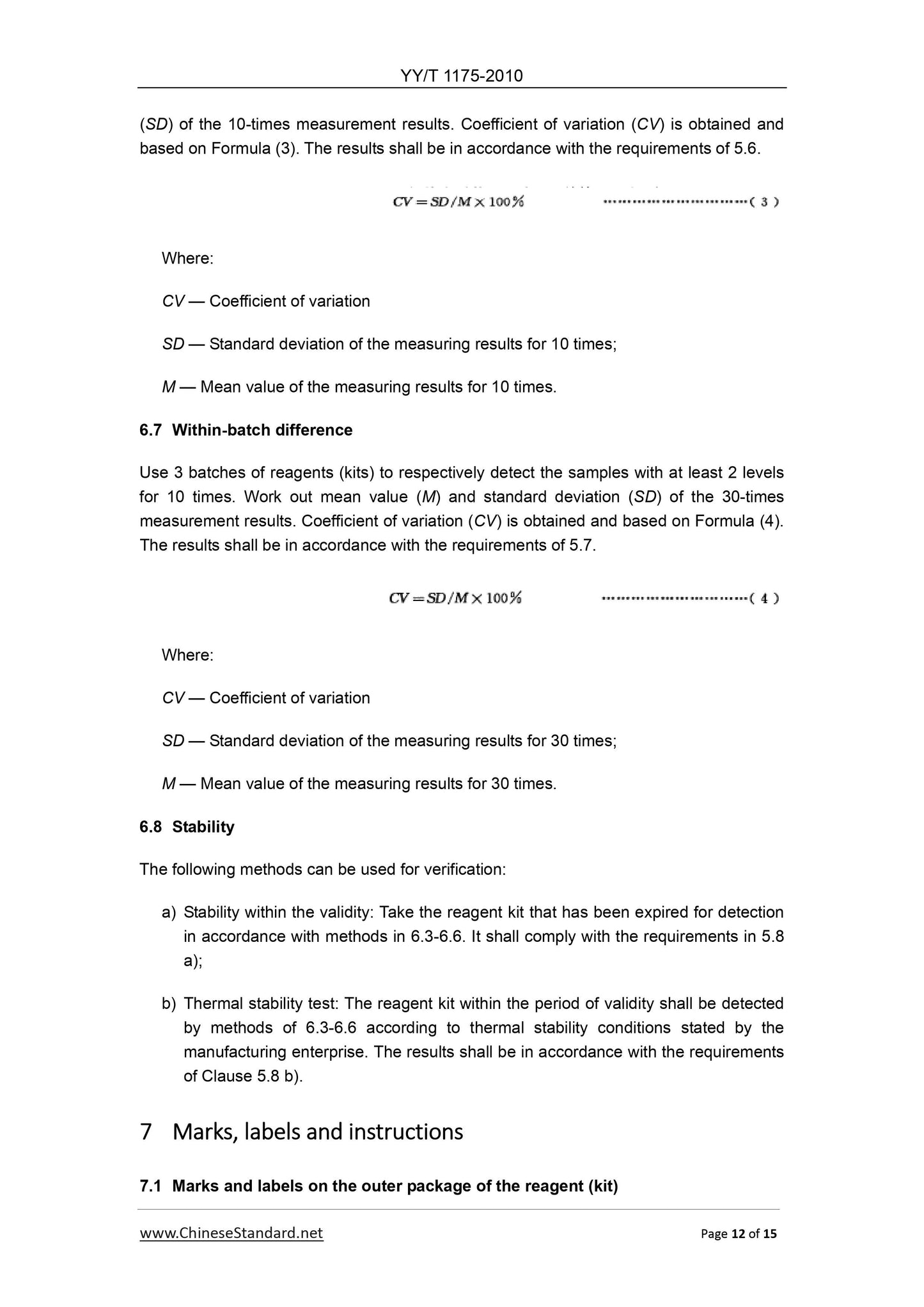1
/
of
12
www.ChineseStandard.us -- Field Test Asia Pte. Ltd.
YY/T 1175-2010 English PDF (YY/T1175-2010)
YY/T 1175-2010 English PDF (YY/T1175-2010)
Regular price
$150.00
Regular price
Sale price
$150.00
Unit price
/
per
Shipping calculated at checkout.
Couldn't load pickup availability
YY/T 1175-2010: Quantitative detection reagent (kit) for tumor markers - Chemiluminescent immunoassay
Delivery: 9 seconds. Download (and Email) true-PDF + Invoice.Get Quotation: Click YY/T 1175-2010 (Self-service in 1-minute)
Newer / historical versions: YY/T 1175-2010
Preview True-PDF
Scope
This standard specifies the terms and definition, classification, requirements, test method,marks, labels, instructions, packaging, transportation and storage etc. of quantitative
detection reagent (kit) [herein after referred to as “reagent (kit)”] for tumor markers
(chemiluminescent immunoassay).
This standard applies to the reagent (kit) used for quantitative detection of human tumor
markers taking the chemiluminescent immunoassay as the principle. It includes the
enzymatic and non-enzymatic chemiluminescent immunoassay detection reagent (kit) in
the carrier of micro-plates, tubes, magnetic particles, micro-beads and plastic beads.
This standard does not apply to.
a) The calibrator and quality control product of tumor markers intended for separate
sale;
b) Biochip that uses chemiluminescent immunoassay as the principle.
2 Normative references
The articles contained in the following documents have become part of this document
when they are quoted herein. For the dated documents so quoted, all the modifications
(Including all corrections) or revisions made thereafter shall be applicable to this
document.
GB/T 21415-2008 In vitro diagnostic medical devices - Measurement of quantities in
biological samples - Metrological traceability of values assigned to calibrators and
control materials
3 Terms and definitions
For the purpose of this document, the following terms and definitions apply.
3.1
Tumor marker, TM
During the tumor generation and reproduction, the certain kind of substances (including
proteins, hormones, enzymes and polyamines) that are generated or secreted by tumor
cells or other cells; released into the blood, body fluids, cells or tissues; reflect the tumor’s
presence and growth; and that are measurable by using methods such as biochemistry,
immunology and molecular biology.
3.2
Chemiluminescence, CL
The luminescence phenomenon that is caused by – because of chemical reactions, the
substances with generated electron energy-level at excited state unleash energy and
produce the photons through transition.
3.3
Chemiluminescent immunoassay, CLIA
It is the technology combined with chemiluminescence and immunoassay. Conduct a
series of immunoreactions through marked antigen or antibody with products to be
measured. Finally measure the luminous intensity to get the content of the product to be
measured.
3.4
Kit for tumor markers
A group of components that are packed together, for the purpose of completing detection
of tumor markers.
3.5
Batch (lot)
The materials produced in one process or a series of processes, which are of consistent
properties and specified amount.
Note. It can be initial-material, intermediate material and final product.
[ISO/FDIS 18113-1, Definition 3.5]
3.6
Batch code, lot number
A combination of particular numbers and (or) letters that can specifically identify one batch
and that has the traceability of manufacturing, packaging, marks and transportation
process.
[ISO/FDIS 18113-1, Definition 3.6]
(SD) of the 10-times measurement results. Coefficient of variation (CV) is obtained and
based on Formula (3). The results shall be in accordance with the requirements of 5.6.
Where.
CV — Coefficient of variation
SD — Standard deviation of the measuring results for 10 times;
M — Mean value of the measuring results for 10 times.
6.7 Within-batch difference
Use 3 batches of reagents (kits) to respectively detect the samples with at least 2 levels
for 10 times. Work out mean value (M) and standard deviation (SD) of the 30-times
measurement results. Coefficient of variation (CV) is obtained and based on Formula (4).
The results shall be in accordance with the requirements of 5.7.
Where.
CV — Coefficient of variation
SD — Standard deviation of the measuring results for 30 times;
M — Mean value of the measuring results for 30 times.
6.8 Stability
The following methods can be used for verification.
a) Stability within the validity. Take the reagent kit that has been expired for detection
in accordance with methods in 6.3-6.6. It shall comply with the requirements in 5.8
a);
b) Thermal stability test. The reagent kit within the period of validity shall be detected
by methods of 6.3-6.6 according to thermal stability conditions stated by the
manufacturing enterprise. The results shall be in accordance with the requirements
of Clause 5.8 b).
7 Marks, labels and instructions
7.1 Marks and labels on the outer package of the reagent (kit)
It shall contain at least the following contents.
a) Product name and packaging specifications;
b) Name, address, contact information of the manufacturing enterprise or after-sales
service organization;
c) Medical device registration certificate number;
d) Product standard number;
e) Product batch number;
f) Expiration date;
g) Storage conditions.
7.2 Marks and labels of each component package of reagent (kit)
It shall contain at least the following contents.
a) Product name and packaging specifications;
b) Name or trademarks of the manufacturing enterprise;
c) Product batch number;
d) Expiration date.
7.3 Instructions of reagent (kit)
It shall contain at least the following contents.
a) Product name;
b) Packaging specifications;
c) Intended use;
d) Detection principle;
e) Main compositions;
f) Storage conditions and expiration date;
g) Applicable instrument;
h) Sample requirement;
i) Detection method;
Bibliography
1. YY/T 0316-2008 Medical devices — Application of risk management to medical
devices (ISO 14971. 2007, IDT)
2. YY/T 0466.1-2009 Devices — Symbols to be used with medical device labels,
labelling and information to be supplied — Part 1.General requirements (ISO
15223.1-2009, IDT)
3. GB/T 191-2008 Packaging - Pictorial marking for handling of goods
4. JJF 1001-1998 General Terms in Metrology and Their definitions
5. ISO/FDIS 18113-1 Clinical laboratory testing and in vitro diagnostic medical
systems — Information supplied by the manufacturer (labelling) — Part 1. Terms,
definitions and general requirements
6. ISO 3534-1. 1993 Statistics Vocabulary and symbols — Part 1. General statistical
terms and terms used in probability — Second Edition
Basic Data
| Standard ID | YY/T 1175-2010 (YY/T1175-2010) |
| Description (Translated English) | Quantitative detection reagent (kit) for tumor markers - Chemiluminescent immunoassay |
| Sector / Industry | Medical Device and Pharmaceutical Industry Standard (Recommended) |
| Classification of Chinese Standard | C44 |
| Classification of International Standard | 11.100 |
| Word Count Estimation | 11,187 |
| Date of Issue | 2010-12-27 |
| Date of Implementation | 2012-06-01 |
| Quoted Standard | GB/T 21415-2008 |
| Regulation (derived from) | State Food and Drug Administration Notice 2010 No. 97 |
| Issuing agency(ies) | State Food and Drug Administration |
| Summary | This standard specifies the quantitative determination of tumor markers reagent (box) (chemiluminescent immunoassay) the terms and definitions, classification, requirements, test methods, marking, labeling, instructions, packaging, transportation and storage. This standard applies to chemiluminescence immunoassay for the quantitative determination of the principle of human tumor marker reagent (box). Including microplates, tubes, magnetic particles, beads and plastic beads, etc. as the carrier of enzymatic and non-enzymatic chemiluminescence immunoassay reagent (box). This standard does not apply to: a) intended to be used tumor markers sold separately tumor marker substance calibrators and control products, b) to chemiluminescent immunoassay for the principle of bio-chips. |
Share
